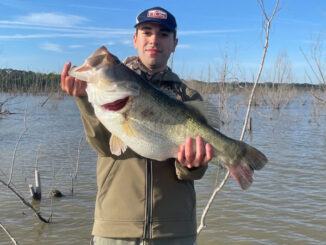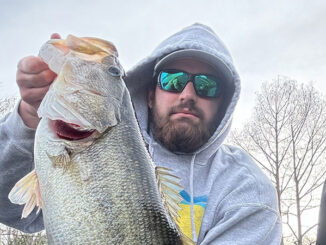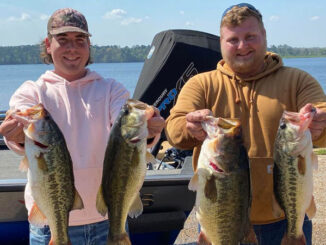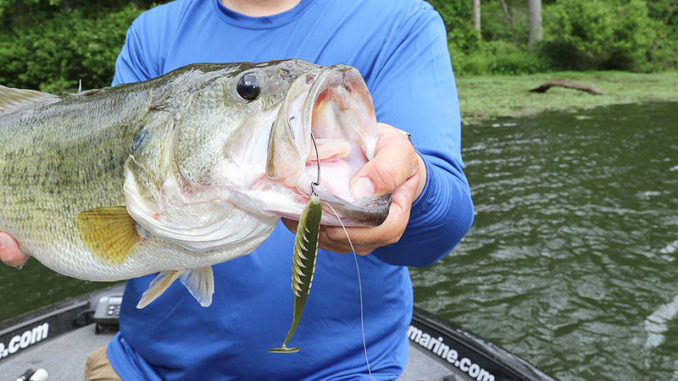
We all want to swing on a big one — and if you’re not integrating swimbaits into your bass plan, you’re limiting your opportunities. This category includes a range of sizes from the small stuff in that 3-inch range to the heavyweights of 8 inches or more. For general use in the prespawn, you’ll do well with a midsize swimbait of 4 ½ to 5 inches.
Some prefer the ultra flexible models like the Strike King Shadalicious or the Berkley Hollow Belly swimbait; while others go with solid swimmers like a Reaction Innovations Skinny Dipper, YUM Pulse or Berkley Havoc Grass Pig. For open water scenarios, a jighead’s open hook design can increase your hook-ups, but around grass, wood or any snag-prone habitat, keep it weedless with a screw lock style wide gap swimbait hook. (Belly-weighted hooks lengthen casts and reach deeper.)
Whatever your choice, these versatile baits serve you well in the spring months with two main applications:
Prespawn search: When ripe females depart their winter haunts and start making their way toward the shallow, protected spawning flats, they’ll basically eat their way into the spawn. With these hefty bass seeking even more heft, baitfish imitations are an easy sell. Crankbaits get a lot of play this time of year, but balancing that look with a soft paddletail swimbait gives target fish an appealing look.
Slow rolling is usually a good place to start, but don’t hesitate to pepper the gumbo with a little razzle-dazzle. The simplest adjustment is speeding up the retrieve for short bursts to mimic a shad or bream that just noticed a follower. Another one: Give the bait a few sharp cranks on the reel to make it dart upward and then kill it for a tantalizing free-fall.
Bed fish irritation: As spring progresses and warming water ushers fish into the spawning areas, you have a settling in period when the fish become highly territorial. Knowing that their eggs will immediately become the target of marauding bream and other nest-raiders, the bass will chase off anything that ventures too close to the nursery. They’re not necessarily looking to eat everything they attack; rather, they’re more interested in running off intruders.
Those medium swimbaits will definitely catch spawners, but that generally results from a blind cast tracking right over a bed. Most days, the swimbait will show you fish that reveal their positions with defensive bluffs. As long as a bait is moving away from the bed, a bass will typically make a menacing charge and quickly circle back home. However, spotting one of these swirls or actually glimpsing the fish will allow you to concentrate your efforts.
Rigging tips
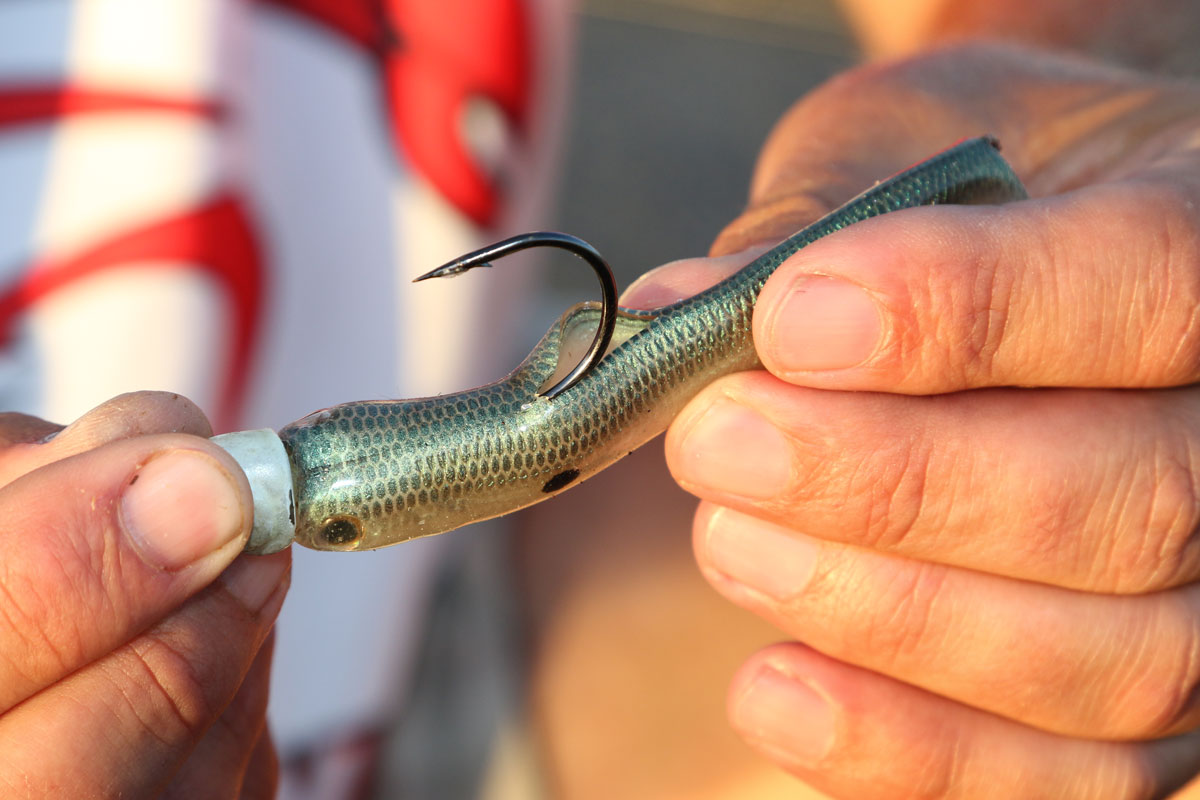
Consider these tips for optimal swimbait performance:
Room to move: Hollow belly swimbaits rigged on jigheads present a time-consuming liability, as the force of a thrashing fish can rip the hook through the bait’s body. A simple fix involves cutting an inch-long slit in the bait’s back to allow more space for the hook to move, thereby reducing the damage done by a hooked fish.
Extra bite: If the fish are finicky, perhaps from heavy fishing pressure or post-frontal conditions; or if you’re dealing with early bed fish that are only nipping at your bait, you may want to increase your bait’s biting ability with a stinger hook.
Owner Stinger Harnesses facilitate the task, but do-it-yourselfers may want to run the point of the swimbait hook through the eye of a treble hook and pin one arm of the latter into the bait’s underside. This arrangement keeps the extra points riding close to minimize snagging in grassy or woody scenarios, but for open water, let the stinger dangle on the swimbait hook’s shank for maximum grabbing power.
